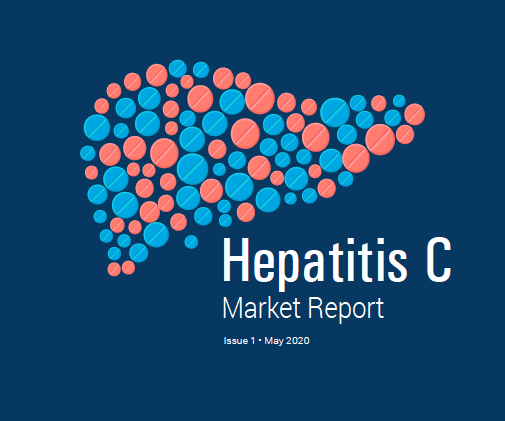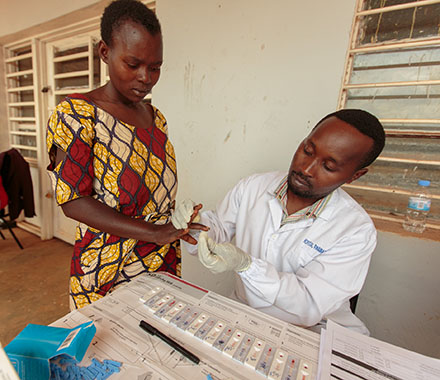This World Hepatitis Day, we find ourselves in strange and difficult times as the globe has turned its attention to battling the COVID-19 pandemic. Even as we pivot to support this important work, we cannot neglect the ongoing needs of people with chronic illnesses, such as viral hepatitis.
Around 71 million people around the world are living with chronic hepatitis C virus (HCV) and almost 400,000 people die from the disease each year, the vast majority in low- and middle-income countries.
With political will, modest financial investment, and targeted technical assistance, strong public HCV programs can be established.
Despite its high prevalence, morbidity, and mortality, only 19 percent (~13.1 million) of people living with HCV know their status, and only 7 percent (~5 million) received treatment as of 2017.
Many factors contribute to this gap in access, including limited awareness due to the asymptomatic nature of HCV, lack of funding and infrastructure for public screening and treatment programs, and the historically high costs of interferon-based treatments that were previously administered and had high toxicities and low success rates. CHAI is continuing to support our partners to find the missing millions, treat them, and eventually eliminate HCV by making care more affordable and accessible to people who need it most.
Progress toward elimination
Despite existing challenges, today we also celebrate the progress we have made toward elimination.
Member states of the World Health Organization have committed to eliminating viral hepatitis by 2030. New direct-acting antiviral (DAA) drug regimens – offering cure rates of over 95 percent with minimal side effects – coupled with a simple diagnostic algorithm make that goal possible.
Since DAAs were introduced in 2014, the cost of treating HCV in low- and middle-income countries with WHO prequalified/USFDA approved drugs has dropped dramatically from over US$3,000 per patient course to as low as US$60 per patient course in 2019. With these advancements, over five million people have received treatment and that number continues to grow.
In the seven countries, including India, Nigeria, Rwanda, Vietnam, Indonesia, Myanmar, and Cambodia, where CHAI works, progress has demonstrated that with political will, modest financial investment, and targeted technical assistance, strong public HCV programs can be established.

CHAI’s first ever Hepatitis C Market Report is out now.
Publishing the Hepatitis C Market Report
This year we published the first ever issue of the CHAI Hepatitis C Market Report to provide market intelligence on HCV diagnostics and drugs in low- and middle-income countries to help guide elimination of the disease. We hosted a webinar on the report’s key findings which was attended by over 200 participants from the global hepatitis community.
The key takeaways of the report and discussion were:
- Low- and middle-income countries can now aim to diagnose, treat, and cure patients for less than US$100 per patient for the required drugs and diagnostics.
- There is no one-size-fits-all approach that countries can follow. However, strong political will and a clear plan for scale up towards elimination can go a long way towards helping countries obtain lower commodity prices.
- Countries with limited budgets and overall financing for hepatitis elimination should work with suppliers and other stakeholders toward adding price visibility into supply chain related expenditures in order to identify how to reduce costs.
The report is a strong addition to the suite of market updates that CHAI publishes, including our HIV and Family Planning Market Reports. These reports provide critical insights into markets and help the public and private sectors develop better strategies to provide products and services to those who need them. The HCV report follows in this tradition.
While the availability and affordability of DAAs has increased dramatically in recent years, uptake has been uneven, with few countries introducing and scaling up care despite declining costs.
Our report touches on price and volume trends, and provides strategies for countries to access drugs and diagnostics at more affordable prices. It also covers examples of countries, like Rwanda and Vietnam, that have identified ways to scale up treatment or make it more affordable to patients despite limited donor funding for the disease. All of this information can be used in a myriad of ways by ministries of health, global health partners, and other interested stakeholders in their efforts to roll out programs, scale them up, and work towards elimination.
“The Hepatitis C Market Report gives benchmark prices for WHO-recommended diagnostics and treatment products, providing a valuable reference for low- and middle-income countries as they plan and advance their HCV elimination programs,” said Dr. Meg Doherty, Director of WHO’s Global HIV, Hepatitis and STI Programmes, who participated in the webinar.

A health worker performs a blood test on a woman to test for HCV in Rwanda.
Moving forward
In Vietnam, in the absence of a coordinated public program for HCV, patients pay out of pocket for care. However, the cost of DAAs – almost US$1,000 for a 12-week course – is unaffordable for many patients. Last year, the government implemented a new health insurance policy to include partial coverage of DAAs in national and provincial health facilities, a first step to making treatment more affordable for patients.
“The market report illustrates the drug and diagnostic prices paid by other countries, providing the Ministry of Health with valuable benchmarks against prices paid by other countries,” said Dang Ngo, CHAI’s Vice President for Southeast Asia Pacific and Vietnam Country Director.
Identifying additional opportunities to increase affordability, such as increasing the reimbursement rate of DAAs through the public health insurance scheme, leveraging pooled procurement mechanisms, and fostering market competition will be key to rapid scaleup of HCV treatment in Vietnam.
Dr Sabin Nsanzimana, Director General of the Rwanda Biomedical Centre and a true hepatitis champion, also joined the webinar and spoke about Rwanda’s journey towards HCV elimination and how the country was able to achieve a price of <$80 per cure (for drugs and diagnostics). He reminded us that we do not need the perfect circumstances to achieve elimination.
“Access is important, equity is important, and believing that you can achieve elimination very fast despite the challenges is very important,” he said. “Challenges should not block us from moving forward. You don’t have to wait for millions of dollars to start a program.”
Rwanda launched its elimination program in December 2018. The Ministry of Health committed to eliminating HCV by treating 112,000 patients over five years. Because of the government’s drive to scale up the program and the engagement of all stakeholders in the country, Rwanda negotiated the lowest treatment prices in the world, setting a new global benchmark for WHO prequalified HCV treatment. The country is now on track to eliminate the disease three years ahead of schedule, by 2021.
“You don’t have to wait for millions of dollars to start a program.”
-Dr. Sabin Nsanzimana
We hope this report provides the broader HCV community with a better understanding of the market landscape and helps stakeholders work towards solving ongoing demand and supply issues in order to expedite progress in achieving HCV elimination by 2030.
We are grateful to our global partners who were very supportive through the report-compiling process and helped us gather relevant data for the analysis, shared product registration status in countries, and provided invaluable feedback during the development and refinement of the report.
On World Hepatitis Day we recommit to continue to engage and collaborate with our partners and the governments we support towards a world free of HCV.





